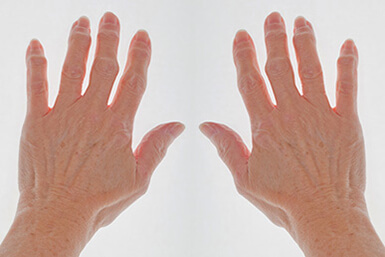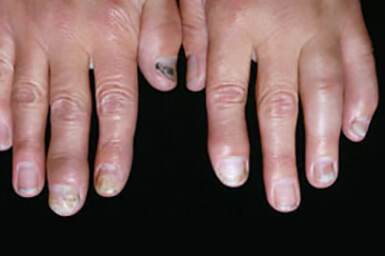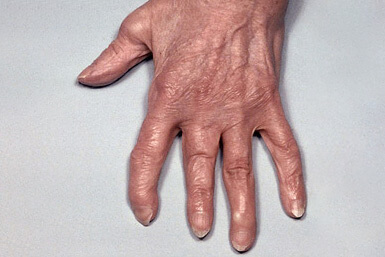Symmetric arthritis
Symmetric arthritis usually affects the same joints on both sides of the body. Usually multiple pairs of joints, such as the right and left knees or right and left elbows, are affected. This type of psoriatic arthritis resembles rheumatoid arthritis, but it’s generally milder.






